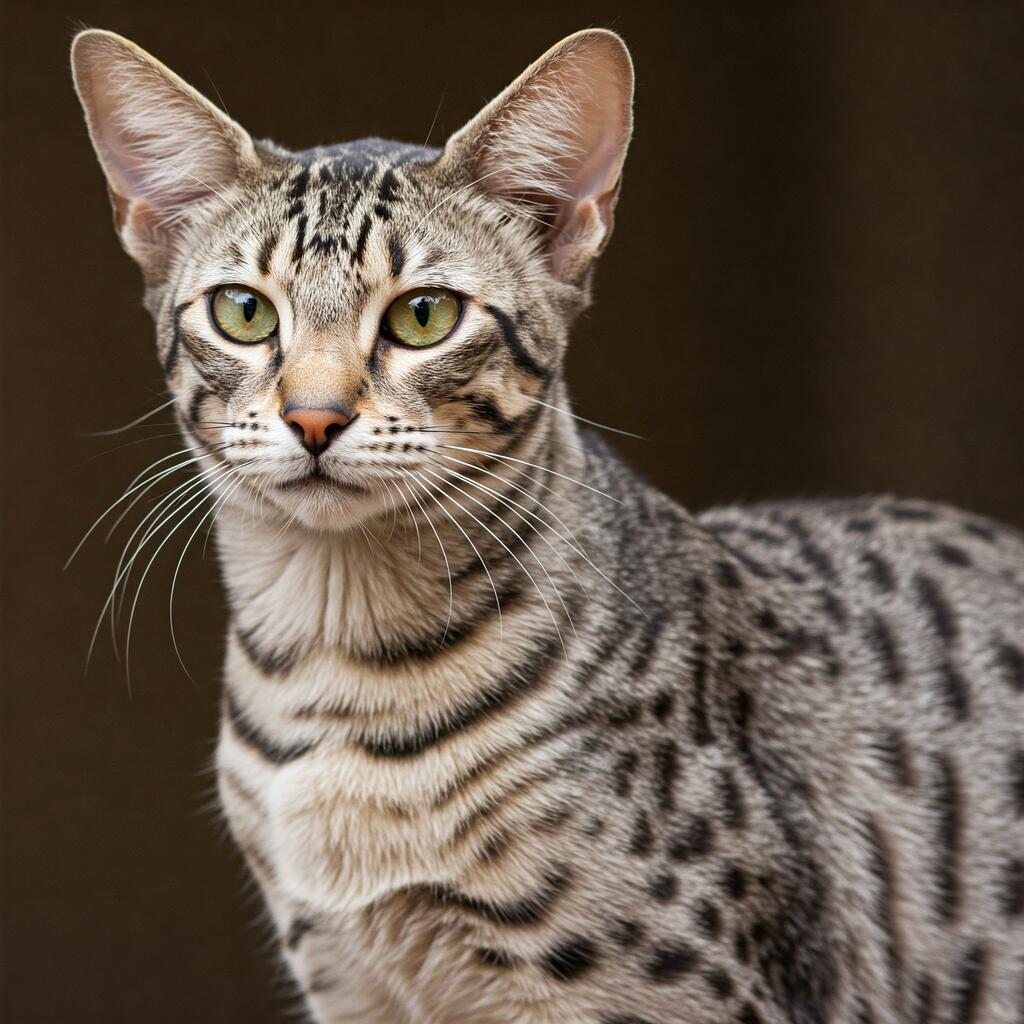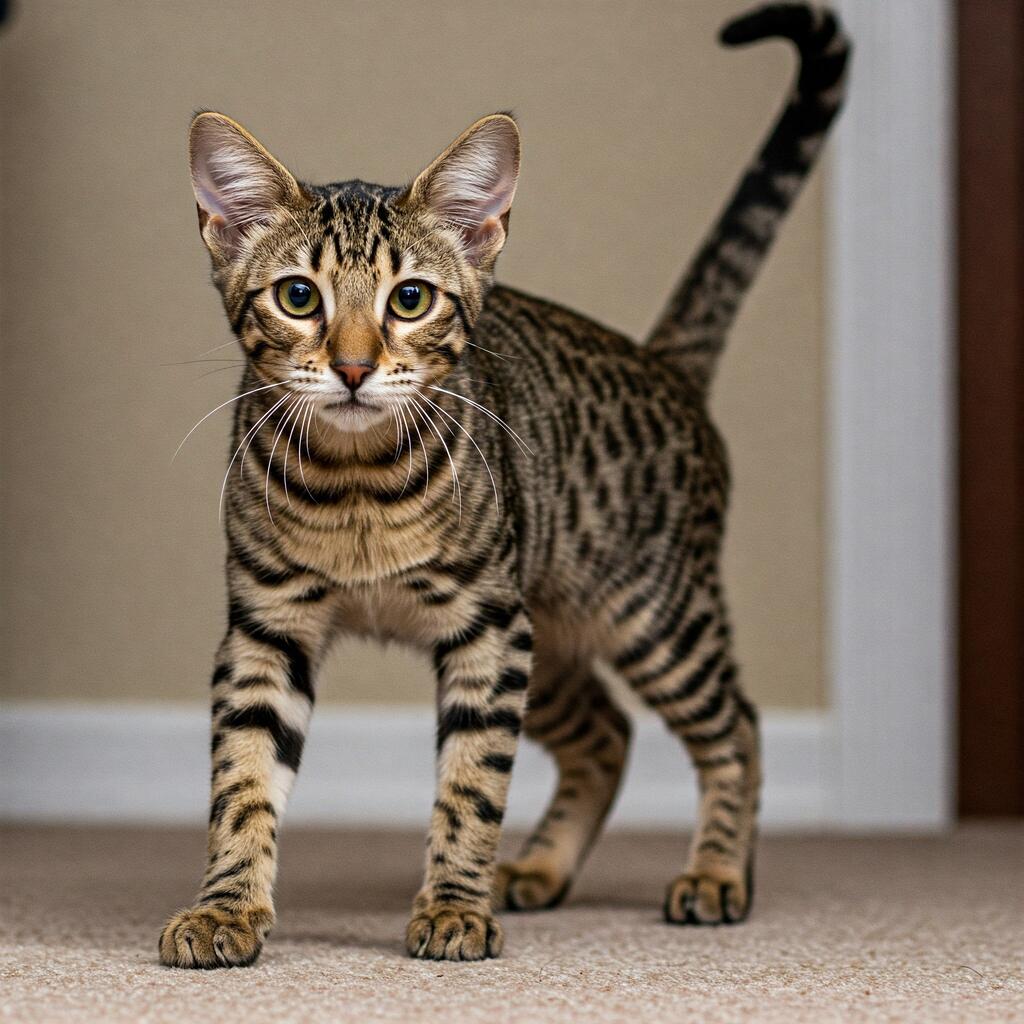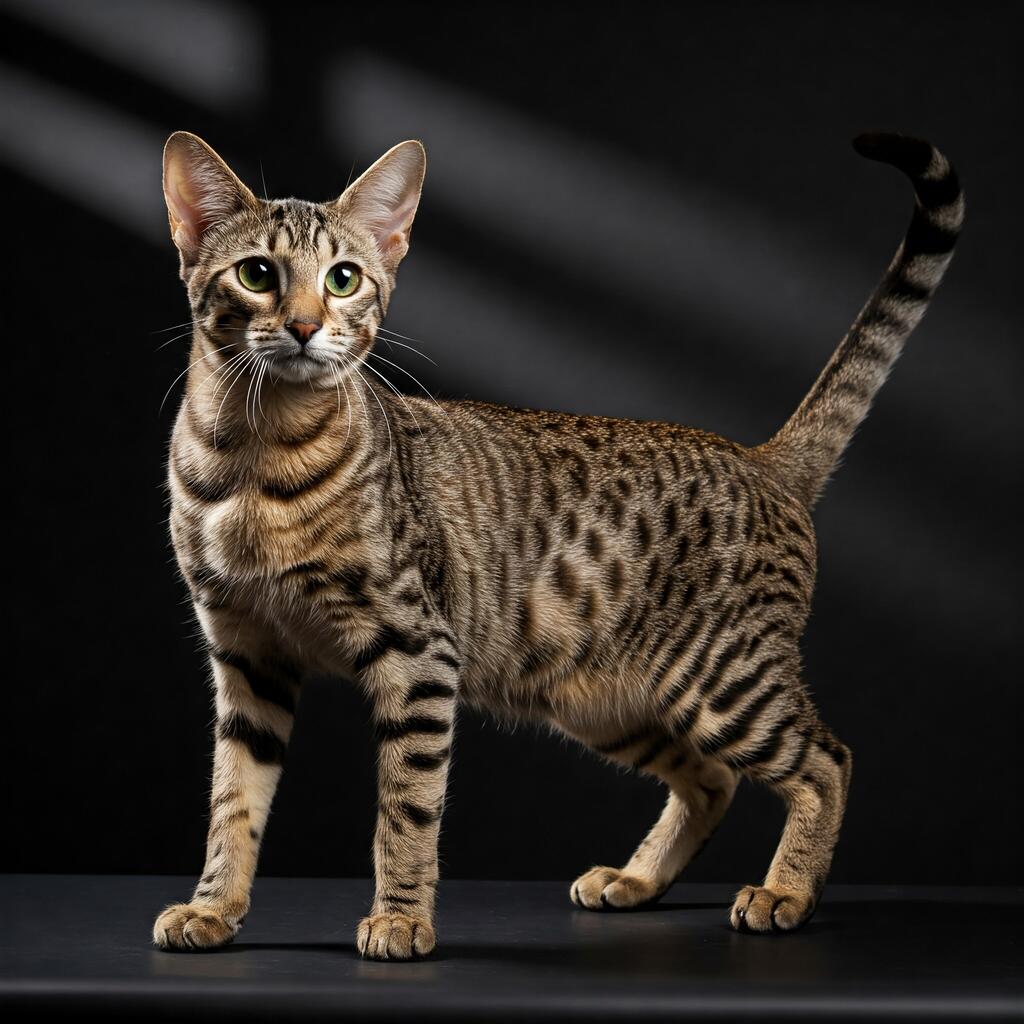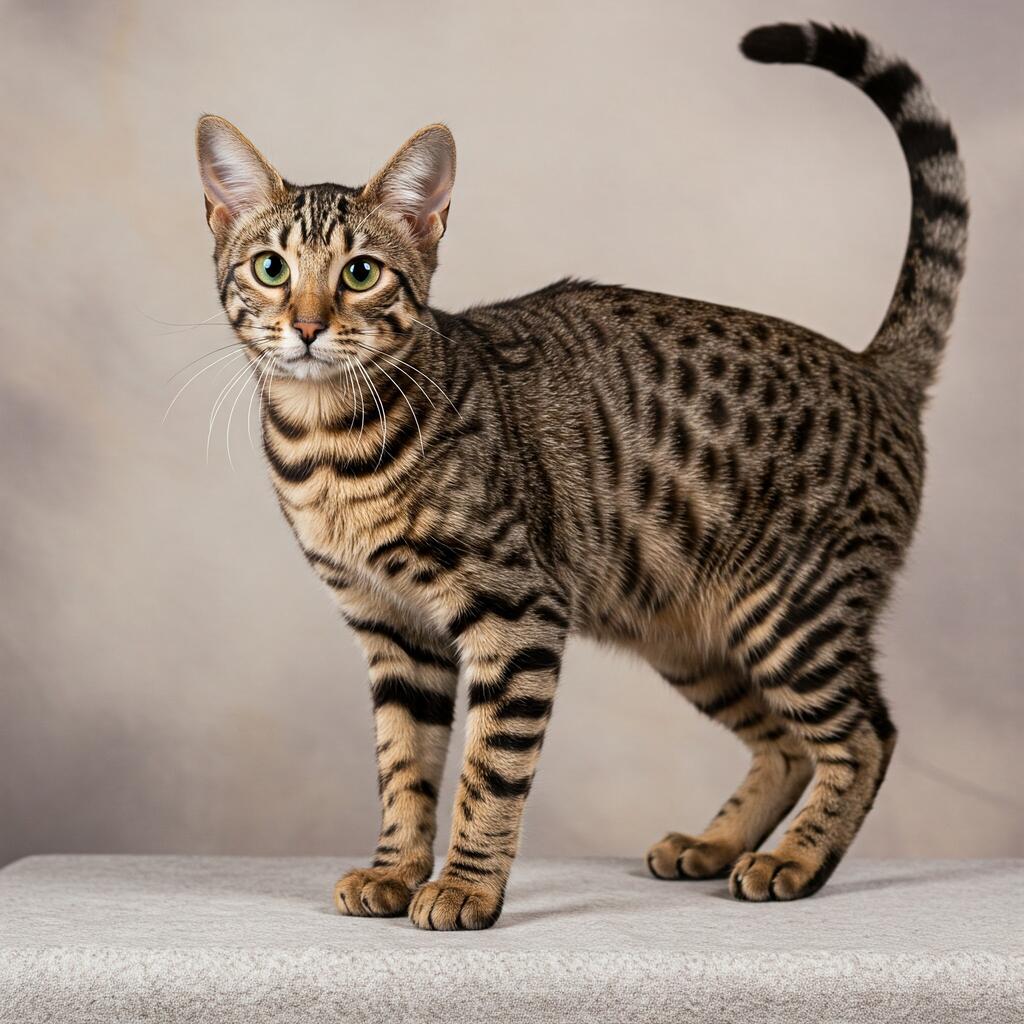
The Wild Appearance of the Domestic Ocicat Breed
The Ocicat is a cat native to the United States and more specifically Michigan. It owes its name to the Ocelot, a feline native to the equatorial forests of Central and South America, to which it resembles in the spots on its coat. It is the result of natural selection and, contrary to its appearance, has no wild blood.
The first specimen of this breed was born in 1964 from a cross between a pure Siamese and an Abyssinian. In the litter a spotted cat was born, which was named Tonga. A further cross was made with an American shorthair, strengthening the size and introducing the silver colour on the coat.
In Europe it is a very rare cat, on the contrary in the USA it is very common and appreciated.
Character of the Ocicat Cat

It is a lively, curious and intelligent cat and is very attached to its chosen human, but is also affectionate with all other family members, so much so that it follows them everywhere.
Due to its intelligence, it is a cat that is not difficult to get used to going out on a leash and can learn to fetch. It is no coincidence that it is also referred to as a dog-cat because of its predisposition to learn and obey.
The Ocicat Cat is always active, even hyperactive, and is therefore not suitable for people who prefer a cat that sits on the couch, moving only to eat and little else. Precisely because of this hyperactivity, it is very well suited to being with children as it is playful and a tireless playmate.
It adapts very well to flat life, but the ideal place for this ever-mobile breed is a safe garden or terrace where it can run, play and explore freely, just as it likes to do.
It has no problem living with other cats and if accustomed from an early age also with dogs. With strangers he usually shows great interest and is quick to make friends and ask for caresses and attention. It is an indomitable hunter, so beware of having small animals, fish or birds in the house.
Appearance of the Ocicat Cat

The head is heart-shaped and is marked by a characteristic M pattern. The ears are moderately large and rounded at the tips and with tufts of hair. The eyes, large, almond-shaped and sloping towards the ears, can be any colour except blue.
But it is the coat of the Ocicat cat that sets it apart, in fact it is spotted like the feline from which it takes its name. This gives it an exotic and wild appearance. Its coat is short, smooth and shiny and has no undercoat. The coat colours are varied and can be fawn, blue, chocolate, lavender, cinnamon, black silver, blue silver, chocolate silver, lavender silver, cinnamon silver and fawn silver. The coat should be spotted with large, round dots forming rows along the spine and descending on the paws as far as possible.
Health of the Ocicat Cat

It is a very robust cat and rarely falls ill, it does not suffer from any particular pathologies except those that come to it by inheritance from the breeds with which it has been crossed. It has a life expectancy of 12 to 15 years and even longer.
It has no particular indications for food as it is only able to regulate its diet and like all cats prefers meat and fish. It is not a cat that tends towards obesity as it is hyperactive even in adulthood.
It fears the cold very much, but tolerates heat very well.






















